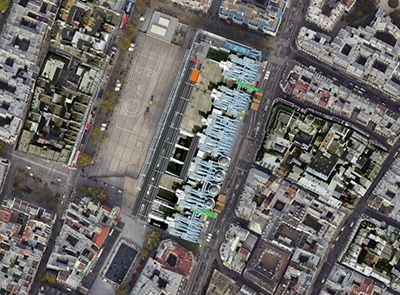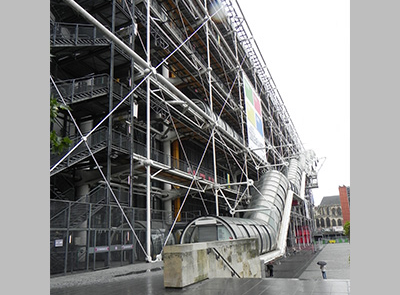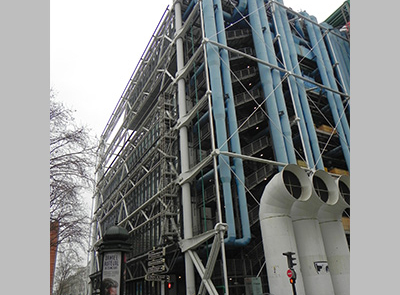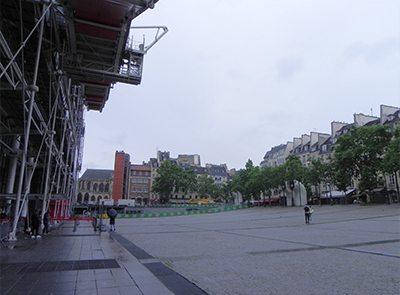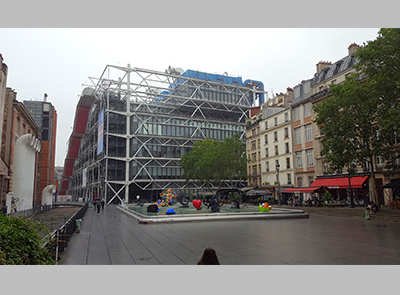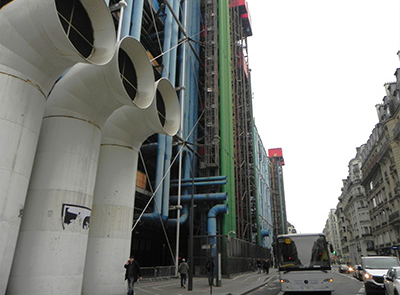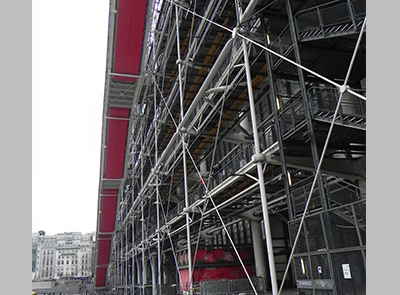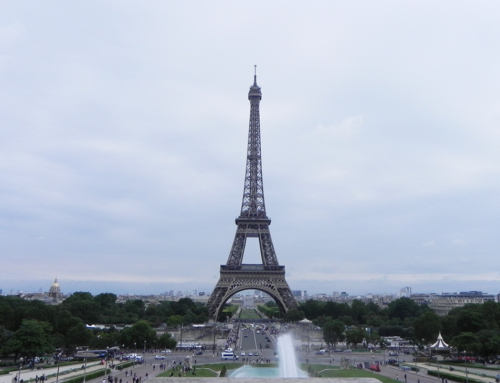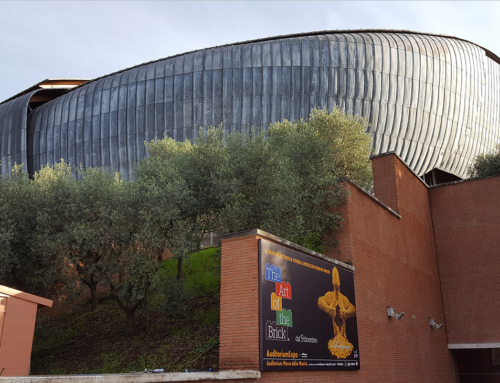
In my list of buildings that have caused controversy in Paris, the Centre Pompidou is the one that has had the most controversy … I intentionally talked about the Louvre renovation project before this one, because in this way it provided me an introduction to the meaning of the modern architecture and modernism represented.
It all started when France’s president George Pompidou determined that as part of its government policy the city of Paris needed to be modernized, and since he was an ardent admirer of contemporary art, in 1971 he decided to start with the idea of creating a multicultural Art complex, which will include a museum and a library; so, for this purpose an International architectural design competition was held with the goal to select a modern building, where the future of the city could be perceived through the new building image.
The competition received more than six hundred proposals, and after a careful evaluation the jury unanimously selected the only design concept that incorporated an open square(piazza) as a part of the complex; the winning proposal belonged to two (at the time) unknown architects Renzo Piano (Italian) and Richard Rogers (British). The design project was based on modern architecture style of the 20th century: a mix of constructivism and high-tech elements, where mechanical and structural elements are exposed on the facades.
This was an Interesting idea but, very different and “too modern” to fit in the context of Paris
and although the president embraced the design of the building (that seemed to belong in a science fiction movie), the citizens of France did not (I completely agree with that). Another problem with the proposed Art Complex that was heavily criticized was its location. The selected site was at the edge of the historic Le Marais district, known for its great historical and architectonic style, as well as its uniformity and elegant townhouses. So, having this new modern structure so close to the district was a big mistake.
The discontent with the winning proposal was so high that during the competition award ceremony Renzo Piano was booed and yelled things like “go away! “Shame of you, a refinery in the heart of Paris” Also, media commentaries were very bad, some of them nicked named the project as the “Notre Dame of the Pipes”. Le Figaro declared “Paris had its own monster, just like the one in Loch Ness.” Thanks to the public backlash, the city council decided to oppose the construction of the project. But since it was a led by the president of France, eventually the construction team obtained the required permits.
Similar to the Eiffel tower and the Louvre Museum projects which were strongly criticized and forced to take special measures, the construction team of the George Pompidou Museum also had to come up with some provisionally measures such as building an opaque fence to block the view of the construction site, work during night hours and make the delivery of construction material, such as the large prefabricated metal beams at night time. So, basically the construction was in a way hidden from the public view.
Finally in 1977 the construction of a rectangular 7 floor high steel structure cultural center with an adjacent open plaza directly connected to the building’s main entrance was finished. The design feature of this project included exposing the structural and mechanical systems, almost like an exoskeleton that holds the entire building. The displayed MEP systems were colored, i.e. in green the plumbing, blue for climate control, yellow for electrical wires and circulation elements on red.
The front façade, faces the big public plaza and features an overhanging transparent outdoor escalator; if we look at this building in its own right, this modern and industrial looking structure is a “Work of art and an engineering design marvel”, that includes in the lower level (basement) the cinemas, conference room and music theater. At the ground level the main entrance to the building, the main lobby or forum, a bookstore and gift shop; the first level above ground includes a café a few galleries and a zone for kids, the second and the third levels are dedicated for a very large public library including the Kandinsky research center. The fourth and fifth levels are rooms dedicated for display of works of art and other objects. The level sixth includes other galleries and a restaurant and the seventh floor is were all mechanical equipment is located.
Similar to that happened with the two previous landmark buildings, the cultural center of Paris George Pompidou became a very popular attraction for locals and visitors. It is also considered a modern icon of 20th century architecture and a reference of high-tech architecture.
I am in favor of modern architecture and the need for the cities to modernize over time…but this interesting and necessary project in my opinion had three big problems…the first one was the “Location” which as I already explained, it’s adjacency to the historical district makes feel as if it in the wrong place; The second problem (which is related to the previous) is that breaks with the building context created since the Baron Haussmann planning rules, which are the main characteristic of one part of Paris. The third problem is his appearance: this famous city is known for the exceptional and unique example of harmoniously architectonic styles, where the different layers of history blended in…and this Masterpiece of the contemporary architecture, “is not transparent” and rather than describing a uniform style look radically different from the rest of the buildings close to it!
However, to defend its design Richard Rogers indicated to the French Newspaper Le Monde that “We will put the building not in the middle of the piazza, but actually on one side because that will give people place to meet”. He also said:
“All good architecture is modern in its time”, Gothic was a fantastic shock; the Renaissance was another shock to all the little medieval buildings. The shock of the news is always difficult to get over”.
In my next blog I will talk about the Louis Vuitton Art Museum, until then “Au revoir”

